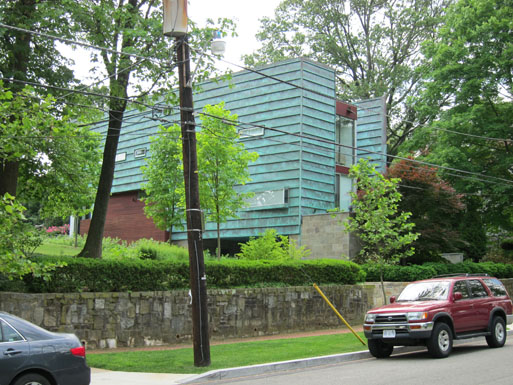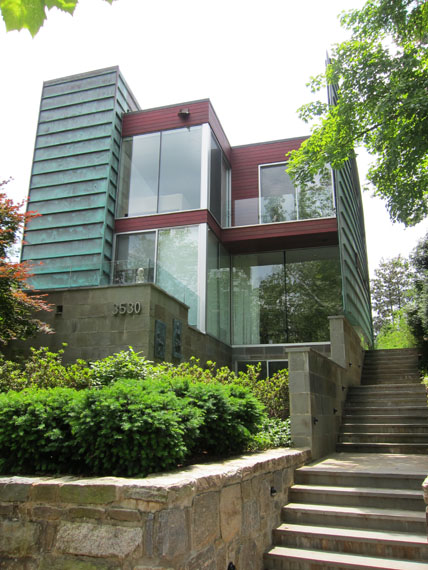
Saturday’s DC Garden Open Day, hosted by the Garden Conservancy, took us down the exclusive streets and well-screened back yards of six well-heeled — and pooled — Washingtonians (did my sons crawl under author Christopher Buckley’s trampoline?). We were about do head into another beautiful garden when my wife got my attention by asking “Is that a zinc house?”

Indeed it was. This house, at 3530 Newark Street, NW, was designed by Travis Price Architects and has a sleek LucasArts starship feel. Assumedly pre-weathered zinc cladding form an outer shield, with minimal openings and a blunt-faced bay on one side and a curved slicing edge on the other. Atop a stone base, the soft underbelly of this creature is mostly glazed, with red clapboard/fiberboard siding.

The stair on the right would suggest a piano nobile scheme with a side entrance, while a peek down the driveway on the left promises a spacious terrace level with a terraced garden.

The scale of the house is compatible with its neighbors. The house has a narrower face on the street — the others don’t typically have driveways — and the large side setback of the house to the east provides the side elevation with a generous eye-catching aspect. The contrast is a bit jarring, but refreshing at the same time.
Bob
That’s a fantastic house! How about doing some postings on modern architecture in Montgomery County? There are some really neat individual homes as well as some entire neighborhoods with modern architecture. There are also some local architects who specialize in such houses.
Andrew
The house was somewhat controversial at the time it was proposed on an undeveloped lot in the Cleveland Park Historic District, generally because it was so different than the traditional structures in the area. However, the owners, architect and DC Historic Preservation Office did a great job ensuring compatibility, particularly since there are a number of modern houses in the immediate vicinity (I.M. Pei and Faulkners).
The house has aged well and does not seem awkward in its place. This is a true example of how modern architecture can fit within a historic context.